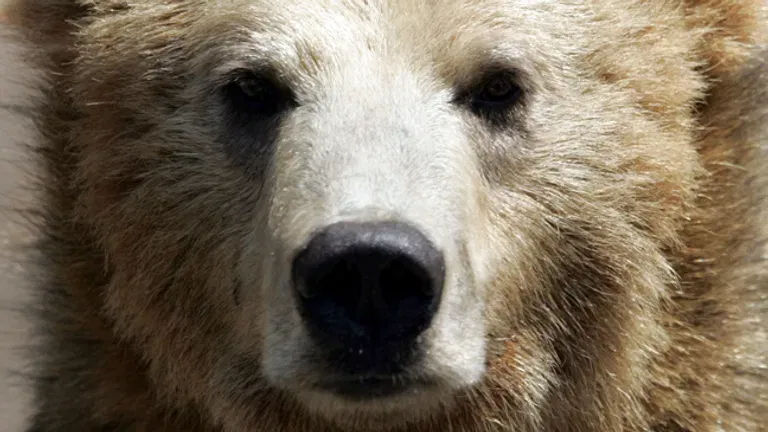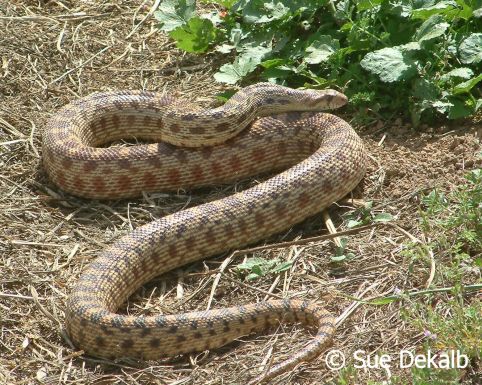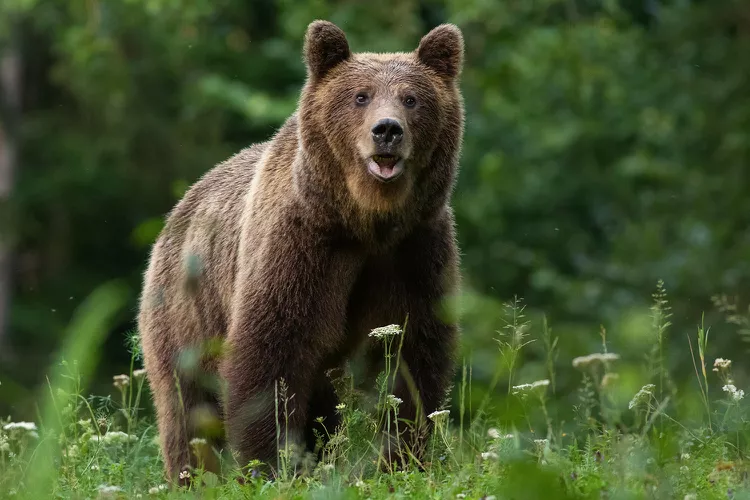Introduction
In a surprising turn of events, a hiker’s encounter with a 4 foot predator killed by hiker has garnered significant media attention, raising questions about wildlife interactions and safety in the great outdoors. This incident, which took place in a remote area, highlights the unpredictable nature of wildlife and the responsibilities that come with exploring nature. As outdoor enthusiasts venture into habitats shared with various predators, understanding the dynamics of these encounters becomes crucial.
In this blog, we will explore the details surrounding the incident, the characteristics of the predator involved, the implications for hikers, and the broader conversation about human-wildlife interactions. Join us as we delve into this intriguing story, examining the lessons learned and the importance of safety measures in outdoor adventures.
1. The Incident: What Happened?
1.1 The Setting of the Encounter
The incident occurred in a remote hiking area known for its stunning scenery and diverse wildlife. Located in the heart of a national forest, this region attracts outdoor enthusiasts from around the country, offering breathtaking views, challenging trails, and the chance to connect with nature. With its dense forests and rugged terrain, it’s also home to various wildlife, including deer, bears, and the 4 foot predator involved in this shocking encounter.
On the day of the incident, the weather was clear, and the trails were moderately busy. Many hikers were out enjoying the beautiful day, but the predator, typically elusive, found itself in an unusual situation. The environment was perfect for a typical hiking day, but it also served as a reminder of the unpredictable nature of wild animals.
1.2 Details of the Encounter
As the hiker, whose identity has not been publicly disclosed, trekked along the trail, they noticed movement in the bushes nearby. Initially dismissing it as a deer or other small wildlife, they continued on their path. Suddenly, a 4 foot predator emerged, catching the hiker off guard. The predator, which was later identified as a large coyote, exhibited aggressive behavior, likely feeling threatened by the hiker’s presence.
In the heat of the moment, the hiker had to make a split-second decision. With the predator advancing, they instinctively reached for a nearby branch to defend themselves. The encounter escalated quickly, resulting in the unfortunate death of the predator. Witnesses on the trail later recounted hearing a commotion and saw the aftermath of the encounter, leading to shock and concern among the hiking community.
1.3 The Aftermath of the Encounter
Following the encounter, the hiker contacted local authorities to report the incident. Wildlife officials arrived on the scene to assess the situation and investigate the circumstances surrounding the death of the predator. The hiker, understandably shaken, was interviewed by the officials about the events leading up to the encounter.
This incident sparked discussions about wildlife safety and the rights of individuals when faced with potentially dangerous animals. The authorities emphasized that while self-defense is crucial, there are protocols for dealing with wildlife encounters, including reporting incidents to ensure the safety of both people and animals.

2. Understanding the Predator: Species Overview
2.1 Characteristics of the Predator
The predator involved in this incident was identified as a coyote, a species that has adapted remarkably well to urban and rural environments. Coyotes typically stand around 24 to 36 inches tall at the shoulder and can weigh between 24 to 46 pounds, with some individuals reaching lengths of up to 4 feet when considering their tails.
Coyotes have a distinctive appearance, featuring a slender, elongated body, a bushy tail, and sharp, pointed ears. Their fur ranges from gray to reddish-brown, providing effective camouflage in their natural habitats. Known for their intelligence and adaptability, coyotes are social animals that often hunt in packs but can also be solitary, especially when foraging for food.
2.2 Natural Behavior and Habitat
Coyotes are primarily nocturnal hunters, making them adept at avoiding human interactions. They are opportunistic feeders, consuming a varied diet that includes small mammals, birds, fruits, and even carrion. Their adaptability allows them to thrive in diverse environments, from deserts to forests and even suburban areas.
Understanding coyote behavior is crucial for hikers and outdoor enthusiasts. They typically avoid human contact but may approach if they feel threatened or if food is involved. This encounter raises important questions about the impact of human activities on wildlife behavior and the need for caution when in their territory.
2.3 Significance in the Ecosystem
Coyotes play a vital role in their ecosystems as both predators and scavengers. By controlling populations of small mammals, they help maintain balance in the food chain. Their presence can also influence the behavior of other species, creating a dynamic interplay within the ecosystem.
The death of a coyote, especially in an area frequented by hikers, can have cascading effects on local wildlife populations. It raises awareness about the necessity of coexistence with wildlife and the importance of preserving natural habitats. Understanding the ecological significance of predators like coyotes helps underscore the need for responsible hiking practices.
3. Human-Wildlife Interactions: Safety and Awareness
3.1 The Importance of Understanding Wildlife
As more people venture into nature, understanding wildlife behavior is crucial for safety. Knowledge about the habits and characteristics of local wildlife can prepare hikers for potential encounters. This understanding helps individuals recognize signs of animal presence and take appropriate precautions.
Education about local fauna, including the types of predators present, their typical behavior, and how to react in different situations can greatly reduce the likelihood of dangerous encounters. Resources such as local wildlife agencies and hiking safety workshops can provide valuable information for outdoor enthusiasts.
3.2 Safety Tips for Hikers
Practical safety tips are essential for hikers to avoid dangerous encounters with wildlife. Some key strategies include:
- Stay Aware of Your Surroundings: Always be alert while hiking, keeping an eye out for wildlife activity.
- Make Noise: Talking, clapping, or using a bell can alert animals to your presence, encouraging them to move away.
- Travel in Groups: Hiking in groups can deter predators, as they are less likely to approach larger gatherings of people.
- Secure Food and Trash: When camping, always store food properly and dispose of trash to avoid attracting animals.
- Know When to Retreat: If you encounter wildlife, assess the situation calmly. If an animal approaches aggressively, back away slowly without turning your back.
3.3 The Role of Conservation in Human-Wildlife Coexistence
The incident raises important questions about conservation and the balance between human activity and wildlife preservation. Local conservation efforts aim to educate the public about safe practices while encouraging respect for wildlife habitats.
Wildlife conservation programs often focus on creating awareness about how human actions impact local ecosystems. Initiatives such as “Leave No Trace” promote responsible outdoor practices, ensuring that natural environments remain undisturbed and wildlife can thrive without fear of human encroachment.

4. The Broader Conversation: Ethics of Wildlife Encounters
4.1 Ethical Considerations of the Incident
This encounter brings up ethical questions regarding the hiker’s actions and the killing of a predator. Many debate whether it was a necessary act of self-defense or if the hiker could have found a way to safely retreat. The ethics of wildlife encounters often revolve around the responsibilities individuals have when interacting with animals in their natural habitats.
The complexity of human-wildlife interactions is a recurring theme in discussions about outdoor ethics. While self-defense is important, it is equally vital to consider non-lethal alternatives and to prioritize coexistence wherever possible.
4.2 Public Reactions and Media Coverage
The incident received considerable media attention, prompting varied public reactions. Some praised the hiker for protecting themselves, while others criticized the decision to kill the predator. This divided opinion highlights the broader societal views on wildlife conservation and the rights of animals versus human safety.
Media coverage of such incidents can shape public perception and influence future behavior. Responsible reporting can educate the public about wildlife safety, while sensationalized narratives might perpetuate fear or misunderstanding about animal behavior.
4.3 Lessons Learned from the Encounter
Finally, we will summarize the lessons learned from this incident, emphasizing the importance of responsible hiking, wildlife education, and promoting a culture of coexistence between humans and nature. Key takeaways include:
- Awareness: Increased understanding of wildlife behavior can help hikers make informed decisions in the field.
- Preparedness: Hikers should always carry safety gear and know how to respond to wildlife encounters.
- Respect for Nature: Acknowledging the rights of wildlife and the importance of conservation can foster a healthier relationship between humans and animals.
Conclusion
The 4 foot predator killed by hiker incident serves as a poignant reminder of the unpredictability of nature and the necessity for safety awareness in the wild. As outdoor enthusiasts, we must recognize our responsibilities in preserving wildlife and promoting safe interactions. Through education and understanding, we can foster a more harmonious relationship with the natural world.
As we continue to explore the beauty of the outdoors, let this incident remind us to respect wildlife and be prepared for any encounters that may arise. The balance between adventure and safety is crucial as we embark on our journeys into nature.
FAQs About the Incident
What type of predator was involved in the incident?
The incident involved a coyote, a common predator in many areas.
How should hikers respond to wildlife encounters?
Hikers should stay calm, avoid direct confrontation, and know how to safely back away.
What are the safety tips for hiking in areas with wildlife?
Preparation, awareness of surroundings, and knowledge of wildlife behavior are essential.
What ethical considerations arise from the incident?
The ethics of self-defense and wildlife preservation are important discussions.





